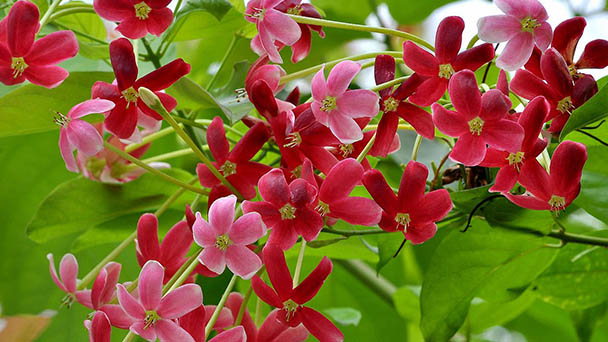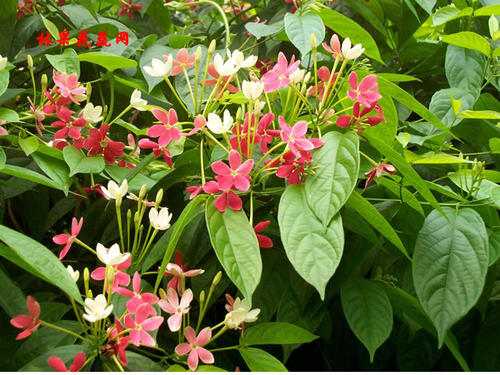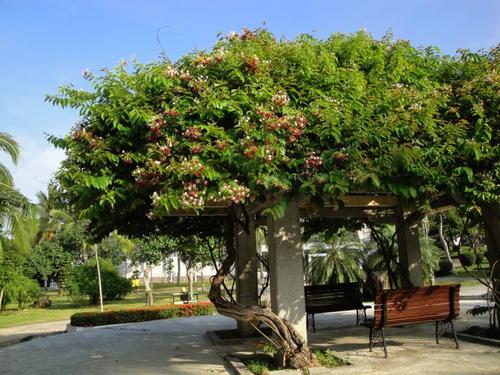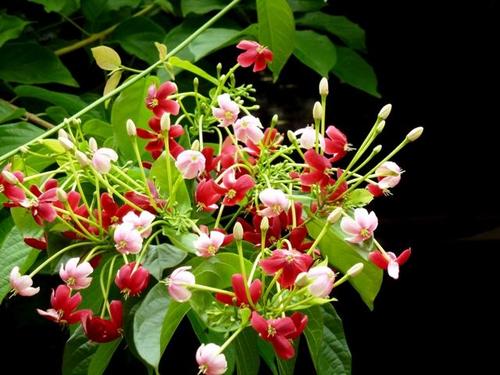The breeding methods and precautions of Quisqualis indica L
Written by Maggie
Nov 20 2020

When raising Quisqualis indica L, a mixture of peat soil, deciduous organic fertilizer, coarse sand and humic soil could be selected as the cultivated soil. The plants should be placed in a sunny environment and the temperature should be controlled at about 20 ~ 30℃. Watering should be carried out according to the weather conditions.
Quisqualis Indica L picture

The breeding methods of Quisqualis Indica L
1. Matrix requirements
Quisqualis indica L likes to grow in sandy soil, rich in organic condition and with strong water infiltration. For potted plants, mixed soil of peat soil, coarse sand and broad-leaved humus could be selected as culture soil. Appropriate amount of decayed organic fertilizer could be applied in the basin soil as base fertilizer during colonization.
2. Environmental management
Quisqualis indica L likes to grow in a high temperature environment with good light. During the curing period, plants should be put outside in more sunshine, which can promote the early flowering of plants. It is also necessary to control the temperature of 20 ~ 30℃. If it is lower than 12℃, move it indoors, and artificial heating can be carried out when necessary.
3, suitable for water
Quisqualis indica L grows faster in the damp matrix, when it's in the spring water every 1 ~ 2 days. Water twice a day in the summer morning and evening, but also to spray mist around it. In order to increase the humidity, it can be watered every 3 ~ 4 days after the autumn, winter, and watering on Monday to keep the soil slightly dry.
4. Fertilize regularly
Fertilization management is one of the breeding methods and considerations for Quisqualis indica L. After colonization, intertillage and weeding should be carried out frequently, and topdressing should be carried out once entering the fruiting stage and after fruit collection. Liquid manure is the main fertilizer, and some humus-rich chicken feathers can be put into the soil during the growing season as long-term fertilizer.

Considerations for breeding Quisqualis Indica L
The juice of the Quisqualis Indica L is poisonous. If accidentally ingested, it will have a certain toxic effect on the stomach and intestines of the human body. In serious cases, it will also cause symptoms such as sore throat, vomiting and stomachache. Therefore, special attention should be paid when breeding at home to avoid affecting the healthy development of the human body.

Latest Updated
- Benefits of Bugleweed - 7 Science-backed Health Benefits
- Bugleweed Dangers & Side Effects - Is It Poisonous?
- How to Plant Evergreen Trees - What You Should Know
- When to Plant Evergreens - Grow Guide for Evergreen Trees
- 12 Wonderful Evergreen Shrubs for Your Garden
- 12 Popular Evergreen Plants with Pictures for Beginners
- When And How To Prune A Lilac Bush Like a Pro
- How to Grow & Care for Lilac Vine (Hardenbergia Violacea)
- Japanese Lilac Tree (Syringa Reticulata) Care & Propagation Guide
- Shumard Oak Pros and Cons - What to Know
Popular Articles
- Winter maintenance of Antirrhinum Majus
- How to Grow Terminalia Mantaly Tree
- How to Grow and Care for Crossostephium Chinense
- How to grow Antirrhinum Majus in spring
- Peristeria Elata (Dove Orchid) Profile: Info & Care Guide
- Underwatered Snake Plant (Sansevieria Trifasciata) - Signs And How To Fix
- How to Care for Brazilian Jasmine Plant (Mandevilla Sanderi)
- How to Grow & Care for Graptopetalum Purple Delight in Summer
- Rosa Chinensis (China Rose): Plant Growing & Care Tips
- How to Care for Baby Sun Rose (Aptenia Cordifolia)